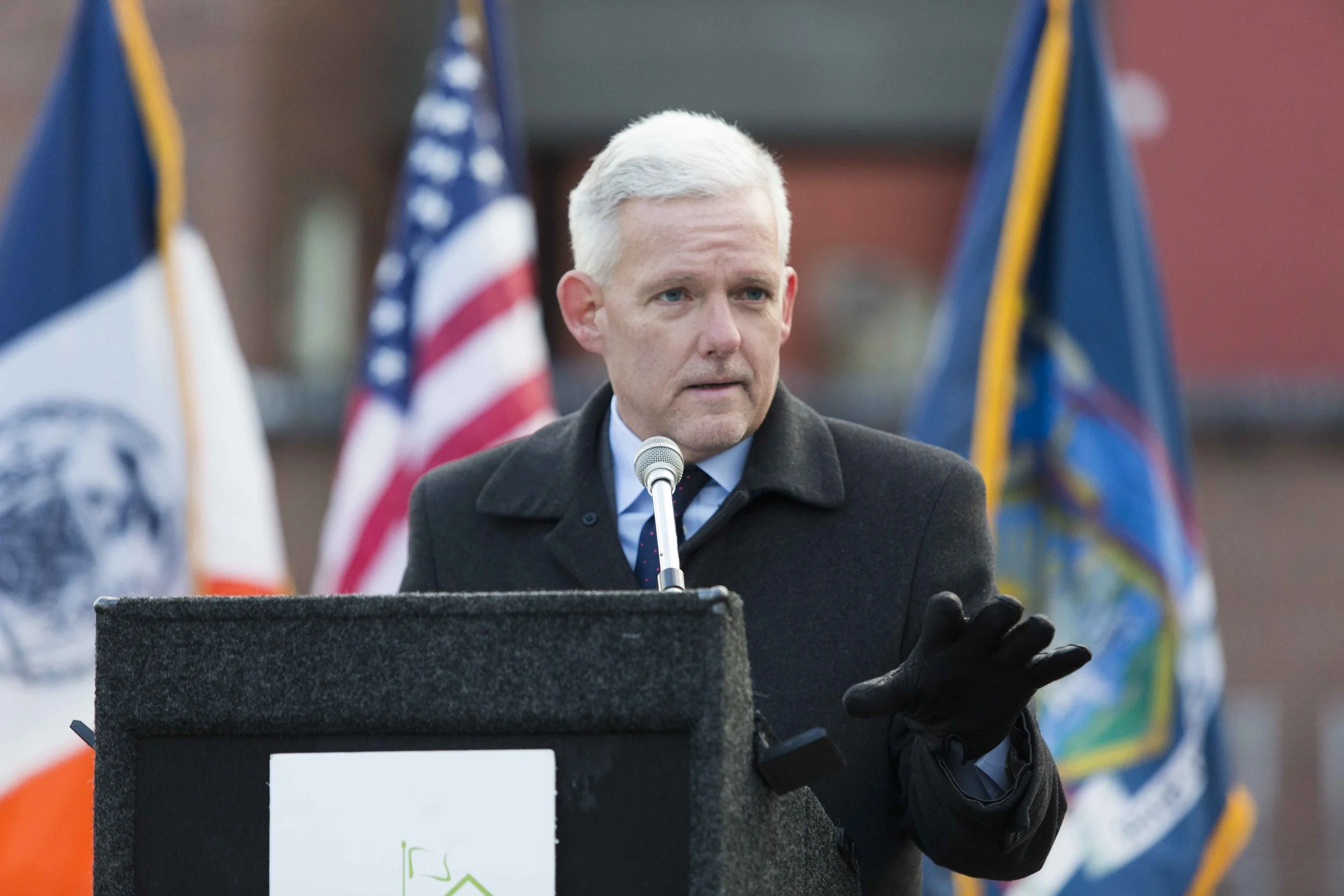OPINION: Building ‘mega jails’ to replace Rikers won’t end the prison industrial complex
/Photo courtesy of Jimmy Van Bramer
By Jimmy Van Bramer
When Mayor de Blasio announced his long-overdue plan to close the Rikers Island jail complex, the concept was to create a new jail system that was "smaller, safer and fairer." Instead, the current jail plan calls for four mega-jails, including a 27-floor building here in Queens.
Rikers is a human rights atrocity, but building mega jails won’t solve the problem. At a time when we should be ending the jail and prison industrial complex, this proposal will invest ten billion dollars right back into the system.
It’s a waste.
The city’s crime rate continues to decrease dramatically, with fewer than 7,000 people held on Rikers; way down from more than 20,000 in the nineties. So why are we spending billions of dollars to build sky-high cages stacked on top of each other?
It’s also personal for me. My older brother was arrested several times as a teenager for small burglaries. We were poor and scrambled to cobble together enough money to spare him from a night in Rikers. We always came up short, and as a consequence, he was shipped off for a few days each time. The trauma of being locked up in such a horrific place changed him. For a troubled kid involved in non-violent, petty criminal activity, incarceration did not help: it set him back.
Obviously my brother and I are white, while young men of color are vastly over-represented in the criminal justice system, ie: black people alone are 33 percent of the prison population, but only 12 percent of the U.S. population. Because of my unearned privilege, I don’t have to worry about being pulled over by the police or searched illegally. But the fact is our criminal justice system is actively biased towards people of color— criminalizing black and brown bodies— with the end goal being to lock them up and throw away the key.
We need to be thinking big about criminal justice reform.
The first step is to eliminate cash bail and severely reduce pre-trial detention. Like my brother, many people wind up on Rikers Island because they simply can’t afford to post bail. That’s just criminalizing poverty. There’s no good reason to detain anyone awaiting trial for non-serious, non-violent crimes when we can implement pre-trial check-ins with parole officers instead.
Next, we have to stop pouring money into failing systems, and invest in incarceration alternatives such as parole services and youth programs. One great example: NeON Arts, an art therapy and cultural immersion program with the Mayor’s Office of Probation and Carnegie Hall. The program engages young men and women on parole to express themselves through spoken word poetry, photography, and the creative arts. Providing arts programs in underserved neighborhoods is even proven to decrease cases of child abuse and neglect by 14 percent and serious crime by 18 percent, while boosting top level English and Math scores by 18 percent, according a University of Pennsylvania study. With just a fraction of ten billion dollars, we can greatly expand small programs like these in a meaningful way.
Ten billion dollars can go towards education and skills training. The New York Public Library provides Rikers women’s jails and some of the smaller city jails with library carts and programs, but the Rikers men’s jails do not have library access. You read that right. It’s a perfect example of the pure cruelty that’s emblematic of the way our system grinds people down.
Libraries are a critical space to access services and programs like GED classes and job training. Ten billion dollars can go towards improving people's lives rather than keeping them in systemic poverty.
We can also invest that money in programs and services proven to prevent kids from entering the criminal justice system in the first place. Diversion programs are an alternative to traditional sentencing and a better way to reduce crime and incarceration, especially in first-time, youth offenders or to treat underlying conditions like mental health or addiction.
New York City’s money should not be tied up in mega jails that lock up our vast potential.
Councilmember Jimmy Van Bramer represents District 26, which includes parts of Sunnyside, Woodside, Long Island City and Astoria




